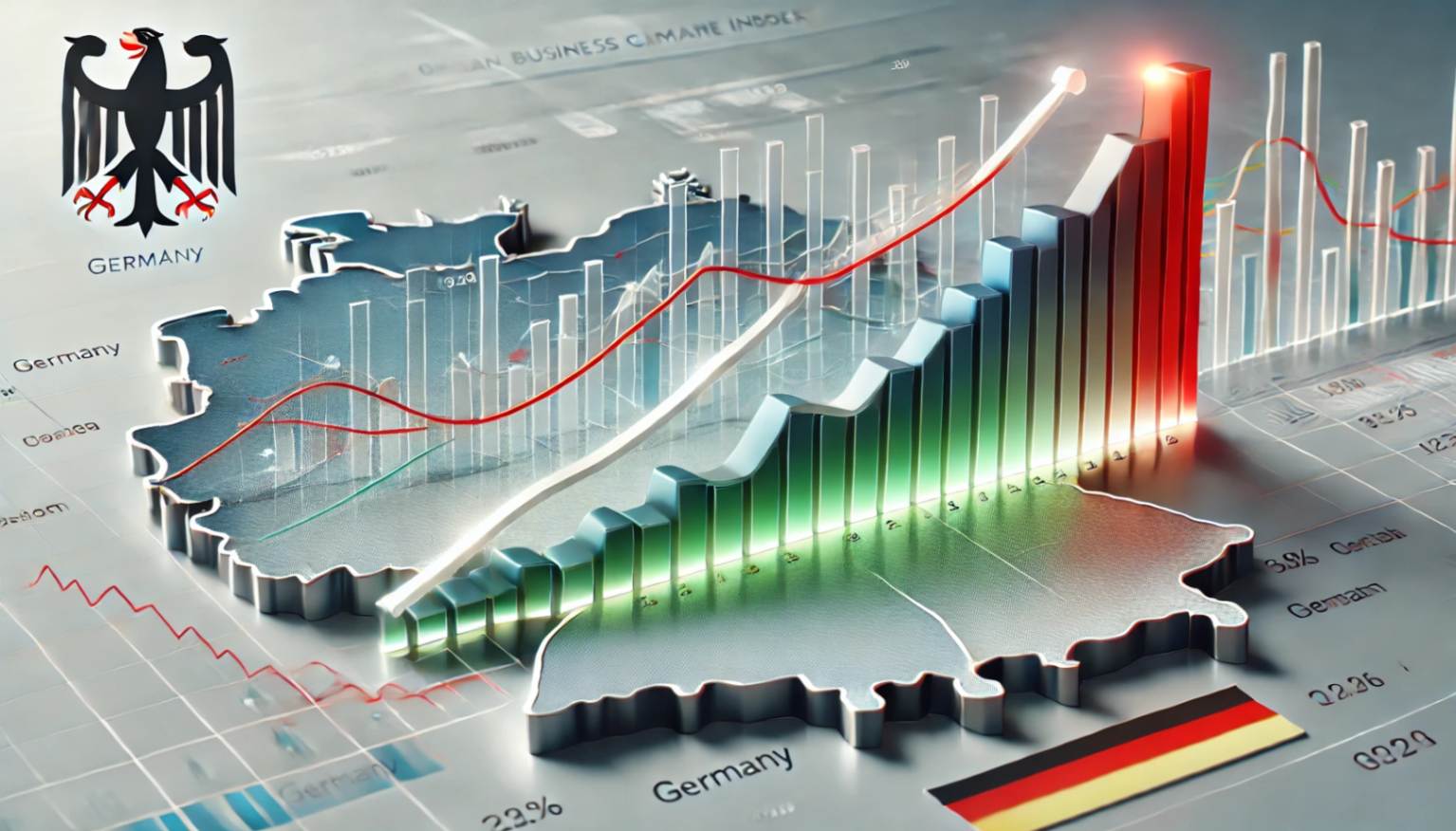The German Business Climate Index is more than just a set of numbers; it’s a window into the economic soul of Europe’s powerhouse. Whether you’re an investor, entrepreneur, or simply an economic enthusiast, understanding this index can provide valuable insights into the market. So, let’s dive in and uncover the layers of this crucial economic indicator.
What is the German Business Climate Index?
The German Business Climate Index (GBCI) is like a barometer for the country’s economic health. Compiled by the Ifo Institute for Economic Research, it surveys thousands of businesses across various sectors. The resulting data reflects the current business situation and expectations for the next six months. Think of it as a weather forecast for the economy, indicating whether sunny days or stormy weather lies ahead.

Why is the German Business Climate Index Important?
Understanding the GBCI is akin to having a cheat sheet for economic trends. It offers a glimpse into business confidence, which in turn influences investment decisions, policy-making, and market strategies. For investors, it’s a goldmine of information that can highlight emerging opportunities or potential pitfalls. Ignoring this index is like driving without a map – you might get somewhere, but you won’t know if it’s the right destination.
Historical Context and Evolution
The GBCI isn’t a new kid on the block. It has been around since 1949, helping businesses and policymakers navigate post-war economic reconstruction. Over the decades, it has evolved, incorporating more sophisticated data collection and analysis methods. Its longevity and adaptability speak volumes about its reliability and relevance.
Components of the German Business Climate Index
The GBCI comprises two main components: the current business situation and business expectations. The former assesses how businesses perceive their current condition, while the latter gauges their outlook for the next six months. This dual approach provides a balanced view, helping to predict short-term economic trends more accurately.
Methodology: How is the GBCI Calculated?
Ever wondered how this index is pieced together? The Ifo Institute surveys around 9,000 firms in manufacturing, construction, wholesaling, and retailing. Businesses rate their current situation and expectations on a scale, and these responses are then compiled into the index. It’s a meticulous process, akin to piecing together a giant economic jigsaw puzzle.
Current Trends and Insights
Economic Optimism Amidst Challenges
Recently, the GBCI has shown a mix of optimism and caution. Despite global uncertainties, many German businesses remain confident about their prospects. This optimism could be the beacon of hope for investors looking for stable markets in turbulent times.
Sector-Specific Highlights
Different sectors tell different stories. For instance, the manufacturing sector often mirrors global trade conditions, while the retail sector can reflect domestic consumer confidence. Analyzing these nuances can help pinpoint specific investment opportunities.
Impact on Global Markets
Germany isn’t just another country; it’s the economic engine of Europe. Therefore, shifts in the GBCI can send ripples across global markets. When the index indicates growth, international investors often flock to German assets, boosting the stock market and strengthening the Euro. Conversely, a dip can trigger caution and capital flight.
Interpreting the Index for Investment Decisions
Reading Between the Lines
Numbers can be deceiving if taken at face value. A slight dip in the index doesn’t necessarily spell doom; it might indicate a market correction or short-term challenges. Conversely, a spike might be due to temporary factors. The key is to dig deeper and understand the underlying causes.
Aligning with Investment Strategies
The GBCI can be a strategic tool for aligning your investment portfolio. If the index predicts growth in the construction sector, for example, it might be wise to invest in construction companies or related industries. It’s like having a treasure map where X marks the spot for potential gains.
Case Studies: Success and Failure
Riding the Wave
Consider the case of a tech startup that expanded during a period of high business confidence as indicated by the GBCI. Leveraging this optimism, they secured funding and scaled operations, eventually becoming a market leader. This success story underscores the importance of aligning business decisions with economic indicators.
Ignoring the Signs
On the flip side, a retail chain that ignored the warning signs of a declining GBCI found itself in hot water. Over-expansion during a period of low consumer confidence led to financial strain and eventual bankruptcy. It’s a stark reminder of the perils of ignoring economic forecasts.
Comparing GBCI with Other Economic Indicators
A Comprehensive View
While the GBCI is invaluable, it’s not the only tool in the shed. Comparing it with other indicators like GDP growth, unemployment rates, and consumer confidence indices can provide a more comprehensive economic picture. It’s like using multiple sensors to navigate a complex terrain.
Correlations and Contrasts
Understanding how the GBCI correlates with other indicators can enhance predictive accuracy. For instance, a high GBCI coupled with low unemployment rates can signal robust economic health. Conversely, a high GBCI but low consumer confidence might suggest underlying issues.
The Future of the German Business Climate Index
Adapting to Change
As the global economy evolves, so does the GBCI. The incorporation of digital data collection and analysis methods ensures it remains relevant. Future enhancements might include real-time updates and more granular sector-specific insights.
Potential Challenges
However, the index faces challenges too. Globalization means that local economic conditions are increasingly influenced by international factors. The GBCI will need to adapt to these complexities to maintain its accuracy and reliability.
Leveraging the GBCI for Market Opportunities
Spotting Trends Early
Investors who keep a close eye on the GBCI can spot emerging trends before they become mainstream. This early bird advantage can translate into significant financial gains. It’s like catching the first rays of the sun while others are still in the dark.
Diversifying Investments
The GBCI can also guide diversification strategies. By highlighting which sectors are poised for growth, it enables investors to spread their risks and maximize returns. Think of it as not putting all your eggs in one basket but knowing exactly which baskets to choose.
Conclusion
The German Business Climate Index is a vital tool for anyone involved in the economic landscape. It offers invaluable insights into market trends, helping to highlight opportunities and mitigate risks. Whether you’re an investor looking for the next big opportunity or a business aiming to navigate the economic waters, the GBCI is your compass. By understanding and leveraging this index, you can make informed decisions that pave the way for success.
FAQs
1. What is the German Business Climate Index?
The German Business Climate Index (GBCI) is an economic indicator compiled by the Ifo Institute, reflecting business confidence based on surveys from various sectors.
2. Why should investors care about the GBCI?
Investors use the GBCI to gauge economic trends, identify market opportunities, and make informed investment decisions.
3. How is the GBCI different from other economic indicators?
The GBCI specifically measures business confidence and expectations, providing a unique perspective compared to broader indicators like GDP or unemployment rates.
4. Can the GBCI predict economic downturns?
While the GBCI can highlight potential downturns by reflecting declining business confidence, it should be used in conjunction with other indicators for more accurate predictions.
5. How often is the GBCI updated?
The GBCI is updated monthly, providing timely insights into the current and future economic climate.





